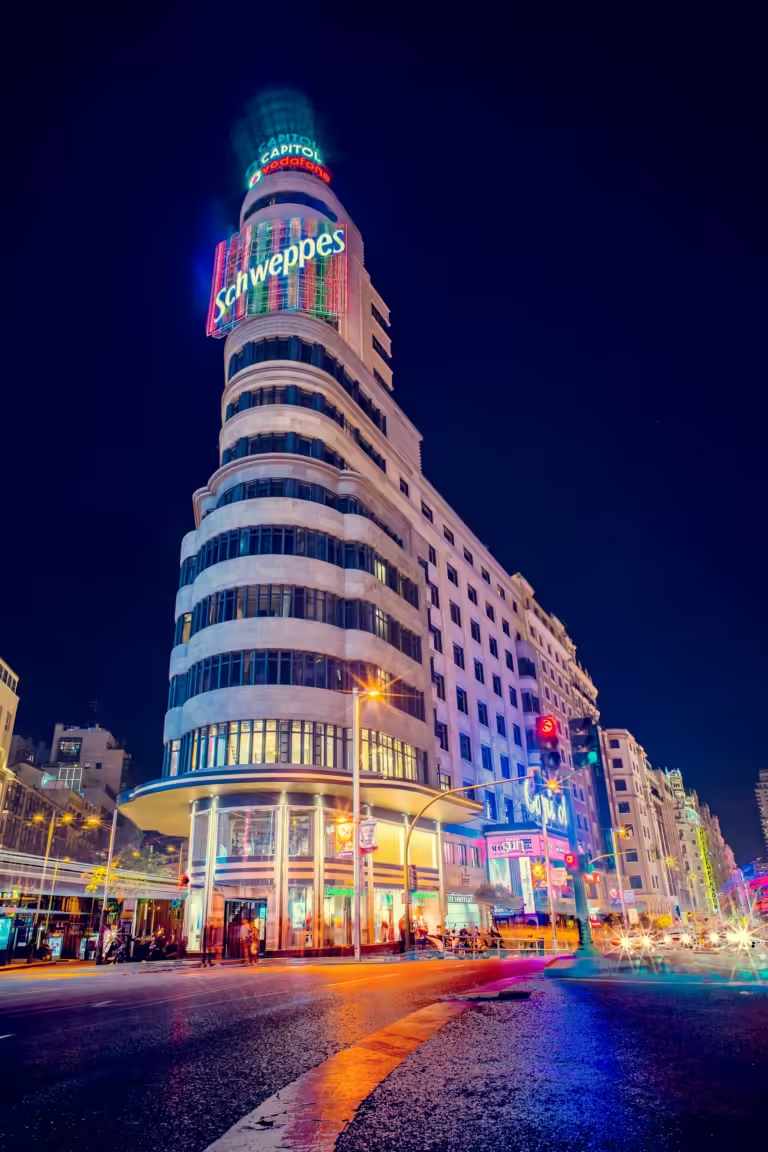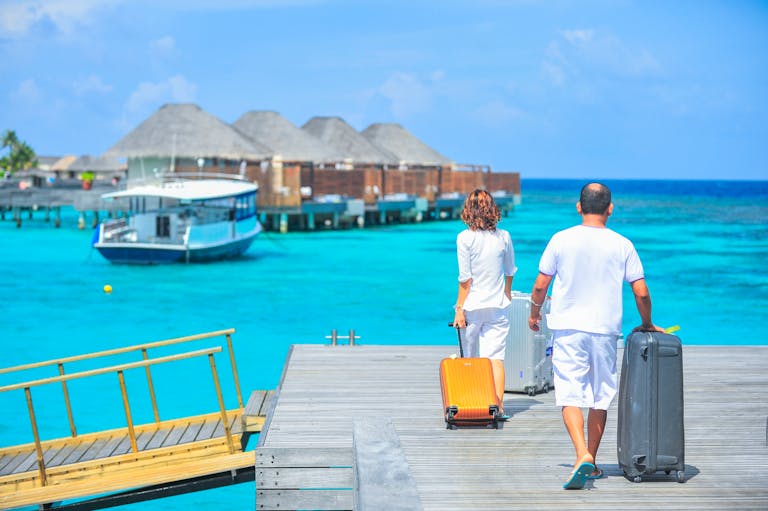What is Mykonos?
Mykonos is one of the most popular tourist destinations in Greece, part of the Cyclades island group. Located in the Aegean Sea, this island boasts a strategic location that attracts visitors from all over the world. The history of Mykonos dates back to ancient times, when it was known for its rice and agricultural trade. The island has also been the subject of numerous Greek myths, giving it a strong cultural significance.
Mykonos boasts a unique geography, boasting stunning beaches with clear waters and white sand, making it an ideal destination for swimming and water activities. Additionally, the mountainous terrain adds a stunning natural touch to the scenery, making hiking and exploring a pleasant experience. Mykonians are known for preserving their local traditions and culture, and thanks to their warm hospitality and delicious cuisine, visitors can enjoy a rich cultural experience.
Architecturally, Mykonos is a symbol of traditional Cycladic beauty, with its whitewashed houses and blue doors creating a striking contrast with the surrounding landscape. Its narrow streets, lined with cafes and shops, are one of the island's most striking features. This architectural diversity opens up the opportunity to explore local culture and art, making Mykonos a unique destination that combines a rich heritage with stunning natural beauty.
Best times to visit Mykonos
Mykonos is one of Greece's most popular tourist destinations. Its Mediterranean climate makes it attractive year-round. However, the best times to visit Mykonos vary depending on the weather, cultural events, and experiences on offer. Summer in Mykonos, from June to September, is the peak season. During this period, the island attracts visitors from all over the world, with all restaurants, bars, and nightlife venues fully operational. Warm temperatures, ranging from 25 to 35°C, allow visitors to enjoy the stunning beaches and clear blue waters.
During the summer, numerous events and festivals are held, enhancing visitors' cultural experience. Guests can enjoy musical performances, artistic events, and a variety of beach activities. It's worth noting that Mykonos' markets come alive during this time, where visitors can purchase traditional Greek handicrafts.
During the winter, Mykonos's visitor season slows down, but the island retains its charm and tranquility. From November to March, temperatures are cooler, ranging between 10 and 15 degrees Celsius. Although many shops and restaurants may close, visitors can enjoy the island's peaceful and distinctive atmosphere, with the opportunity to explore historical landmarks. Winter is ideal for those seeking to avoid the crowds and immerse themselves in the local culture.
In general, if you're looking for a lively and action-packed experience, summer is the best time to visit Mykonos. However, if you prefer a more relaxed atmosphere and unique island culture, winter may be the perfect choice for you.
Travel costs to Mykonos
Mykonos remains one of the most popular tourist destinations in Greece, but visitors should plan on a budget to enjoy its amazing experiences. Accommodation prices in Mykonos vary widely, with budget hotels starting at around €50 per night, while luxury resorts can cost upwards of €300 per night. Booking in advance, especially during the peak summer season, is recommended to secure reasonable rates.
As for food costs, Mykonos offers a variety of options to suit all budgets. Visitors can enjoy a meal at a local restaurant for as little as 15 euros, while meals at fine dining establishments can cost 50 euros or more. Transportation is also an important part of your travel budget; you can use public transportation or rent a bike or car to explore the island. On average, transportation costs can range from 3 to 20 euros, depending on the mode of transportation used.
Additionally, the cost of recreational activities must be factored in. Beach activities such as umbrella and chair rentals are the basic cost, ranging from 10 to 25 euros. Activities such as boat trips, visits, and sightseeing vary depending on the type of activity, ranging from 20 to 100 euros. Overall, travel costs to Mykonos may be slightly higher than some destinations in Greece, but they reflect the unique beauty and rich culture you'll discover on this enchanting island.
Things to do in Mykonos
Mykonos boasts a variety of activities, making it an ideal destination for all types of travelers. Options range from tourist attractions to cultural activities and sporting events, giving visitors the opportunity to experience everything this picturesque island has to offer.
One of the most prominent landmarks to visit in Mykonos is the area's famous windmills, which date back to the 16th century. These offer a stunning view of the city and are ideal for capturing stunning photos. Additionally, the Terra Nazo neighborhood is considered one of the most important cultural areas, where visitors can enjoy a stroll through its narrow streets and explore the local shops. This neighborhood is home to numerous art galleries and traditional cafes, offering visitors the opportunity to experience Greek art and culture.
For sports enthusiasts, Mykonos offers a variety of unique options, including the highly popular diving in the clear blue waters. Visitors can join diving courses or rent equipment to explore the shells and coral reefs underwater. Visitors can also enjoy numerous other water sports, such as water skiing and windsurfing, providing an unforgettable experience amidst stunning nature.
Not to be missed is a stroll along the stunning beaches of Mykonos, such as Plaka Beach and Ornos Beach, which provide the perfect setting for relaxing and soaking up the sun. Nightlife is also an important part of the Mykonos experience, with visitors able to explore the vibrant nightlife at the restaurants and bars scattered throughout the island.
The Monument and Cultural History of Mykonos
The island of Mykonos is one of the most popular tourist destinations in Greece, not only for its natural beauty but also for its rich cultural history and land ownership. In ancient times, the island was under the control of various powers; Mykonos was part of the ancient Greek Empire and witnessed numerous influences from the peoples who passed through it.
During the Middle Ages, Mykonos came under Ottoman rule, which shaped its architectural and religious culture. During this period, the island developed as a major trading center in the Aegean Sea. Mykonians also engaged in extensive trade with neighboring regions, which led to a flourishing local culture and its interaction with other cultures.
By the 19th century, Mykonos regained its independence and became a symbol of modern Greek culture. Today, the island boasts a diverse array of tourist and cultural attractions that reflect its history. Traditional villages, whitewashed architecture, and stunning beaches attract visitors from all over the world, and numerous mansions and historic buildings represent a rich heritage that connects the island's past and present.
Today, Mykonos is owned by a group of owners who strive to preserve its culture and heritage. Many of the island's wealthy families own luxury properties, while others own tourism-related businesses. The influence of foreign cultures is still evident in local festivals, arts, and music, making Mykonos a crossroads of cultures and reflecting its rich cultural history.
Mykonos' geographical location
Located in the heart of the Aegean Sea, Mykonos is one of Greece's most popular geographical entities. Part of the Cyclades island group, which also includes well-known islands such as Santorini and Naxos, Mykonos' strategic location, approximately 150 kilometers from the capital, Athens, makes it a prime and easily accessible tourist destination for travelers.
On a map, Mykonos can be located by its geographic layout, which shows its clear blue coastline and mountainous areas that enhance its natural beauty. The island covers an area of approximately 85 square kilometers, giving visitors the opportunity to explore its many facets in a limited amount of time. Mykonos has a good internal transportation system, including taxis and buses, making it easy to get between popular tourist sites, such as Mykonos Old Town and the sandy beaches.
Mykonos also boasts a collection of traditional villages that reflect the island's cultural identity. This is evident in the distinctive whitewashed architecture and narrow streets lined with markets and cafes. Attracting many tourists, Mykonos's geographical location facilitates connections between the two cities and supports its cultural and social activities. The natural and cultural diversity of Mykonos makes the island a true magnet for Aegean travel and tourism enthusiasts.
The most beautiful islands in Greece
Mykonos is one of the most beautiful tourist destinations in Greece, boasting stunning beaches and a vibrant nightlife. But what sets it apart from other islands in the Greek archipelago? To answer this question, we can compare Mykonos to some of the more popular islands, such as Santorini, Crete, and Paros.
Santorini is famous for its stunning views and hot air balloons, which make for magical sunsets. Crete, meanwhile, is renowned for its rich cultural history and significant archaeological sites, making it an undeniable cultural and historical center. Paros, on the other hand, boasts a tranquil atmosphere and pristine beaches that appeal to those seeking relaxation.
However, it can be said that Mykonos is an ideal destination for a mix of fun and relaxation. Visitors to Mykonos enjoy a wide range of activities, from the vibrant nightlife in the alleys of the old town to relaxing on one of the sparkling sandy beaches. However, other islands may not offer the same energetic energy and crowds that Mykonos is famous for.
Furthermore, Mykonos regularly hosts cultural events and festivals that enhance the visitor experience. The island is a meeting point of diverse civilizations and cultures, where visitors can enjoy authentic Greek cuisine and interact with the locals. All of these factors make Mykonos attractive and a top destination on the list of the most beautiful islands in Greece.
Airports and transportation in Mykonos
Mykonos is one of the most popular destinations in Greece, welcoming visitors via Mykonos International Airport, located approximately 4 kilometers from the capital. This airport boasts modern facilities and a variety of services, allowing visitors easy access to the island via domestic and international flights. The airport facilitates access to various European cities, enhancing Mykonos's position as a major tourist destination.
After arriving at Mykonos Airport, there are several transportation options available. Among the available options are the taxis, which are readily available in front of the airport. This is the fastest and most direct way to reach your desired destination. Additionally, the island offers public bus services that go to various major areas of Mykonos, which can be a preferred economical mode of transportation for many tourists.
For added flexibility, visitors are also advised to rent a car or motorbike, allowing them to explore the island at their own pace. There are numerous car rental offices at the airport, in addition to options available in the city. Driving in Mykonos is a pleasant experience, as visitors can enjoy the stunning scenery while strolling through the streets.
Additionally, maritime transportation options are an important part of the island experience. Visitors can travel to and from some of the neighboring islands by ferry, adding another dimension to their exploration. Overall, Mykonos offers a variety of transportation options that facilitate movement and travel within the island, helping you enjoy all its beauty and culture.
Frequently Asked Questions about Mykonos
Preparing for a visit to Mykonos is important, and frequently asked questions help tourists understand more about this fascinating destination. One of the most interesting things visitors learn about the island is how to get around, and walking is a popular way to do so. Thanks to the narrow roads and cobblestone streets, visitors can explore the beautiful towns and villages on foot. However, careful planning is recommended, as distances can sometimes be long, and many tourists prefer to rent a motorbike or car to get between remote areas.
Another issue that may raise questions for tourists is the presence of prisons on Mykonos. According to available information, the island has no official prisons, making it a safe tourist destination where tourists can enjoy a comfortable stay. Visitors are often concerned about safety and security when visiting new places, and Mykonos is often considered one of the safest destinations in Greece.
Another common question concerns the island's water system. Mykonos relies on rainwater tanks and desalinated water to meet the needs of its residents and visitors. Although the supply of drinking water is efficient, tourists are always advised to check on water sources, especially in remote areas. It's a good idea to check for rewards to ensure a pleasant and comfortable stay. In this way, these questions and answers help enhance Mykonos visitors' knowledge and facilitate their travel experience.






